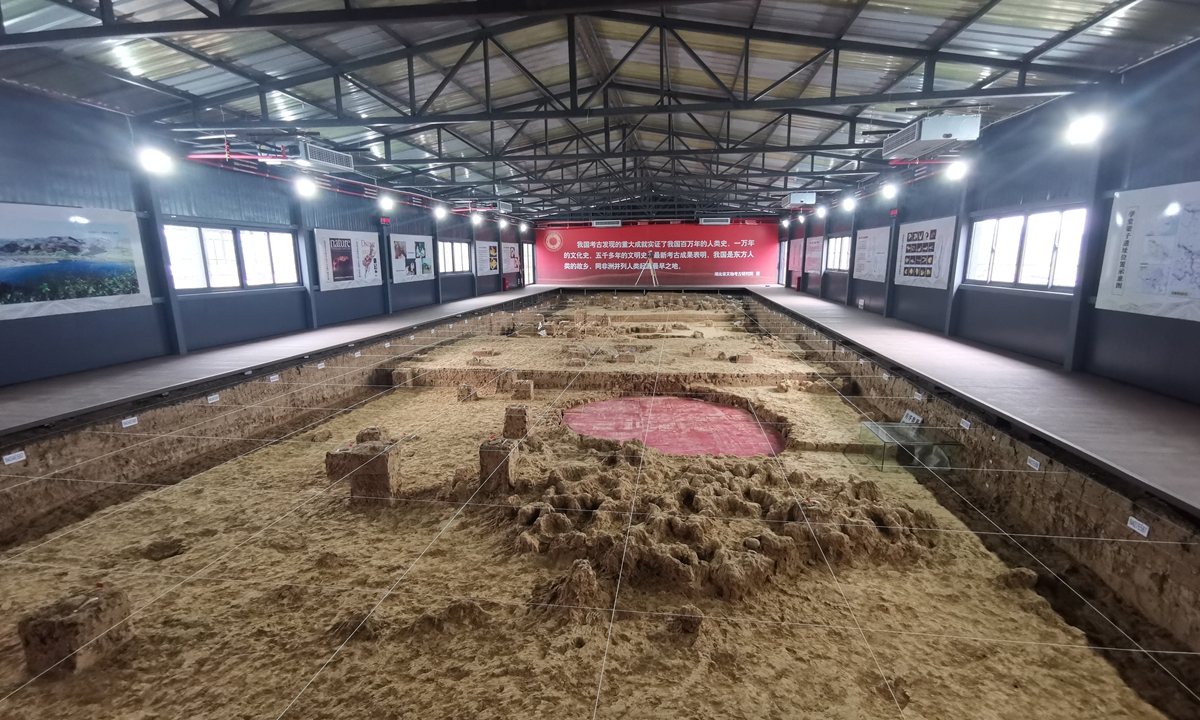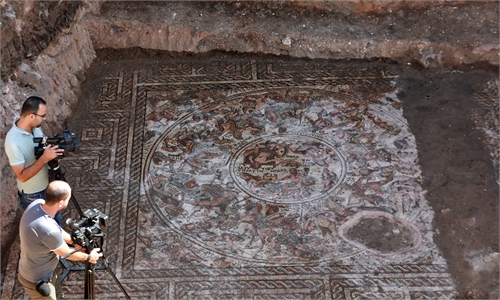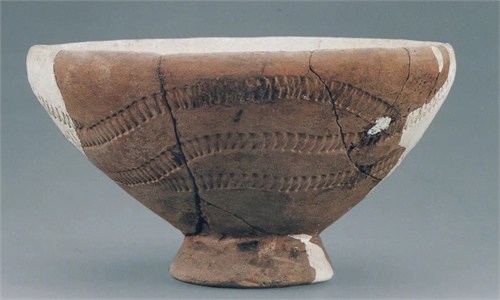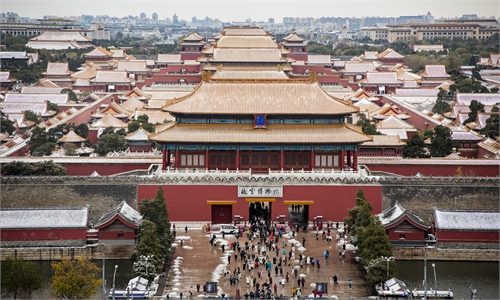ARTS / CULTURE & LEISURE
1 million-year-old skull discovered in China gives new insight into human evolution
The dawn of man

A view of the Xuetang Liangzi Site in Shiyan, Central China's Hubei Province Photo: VCG
An archeologist cleans the last layer of sediment with a brush and gingerly removes the fossil of a human skull out of the earth with both hands. The fossil, around 1 million years old, will soon be sent to an archeological academy for further research and restoration, where it is sure to contribute to the study of human evolution by providing further insight into the origins of mankind.
The fossil is the third ancient human skull dating back to around 1 million years ago found at the Xuetang Liangzi Site in Shiyan, Central China's Hubei Province, making it the third "Yunxian Man."
After publishing the discovery of the skull in September 2022, researchers began working on carefully excavating it from the earth and were finally successful at the end of 2022. The discovery is the most intact hominid skull fossil found in Eurasia so far, retaining important and rare anatomical features of humans at this stage of evolution, the research team noted.
The fossil, along with the other two previously discovered skulls at the site, have been given the name Yunxian Man after the county in which they were discovered. Representing a key point in the evolution of Homo erectus, the fossils are important discoveries for research into the evolution of the species and its origin and development in China and the rest of East Asia, Gao Xing, a research fellow at the Institute of Vertebrate Paleontology and Paleoanthropology and leader of the research team, told the Global Times.
Meeting face to face
It took more than half a year to excavate the third skull. Staking out a 4-square-meter excavation point, Chinese archaeologists painstakingly removed the soil in 2-centimeter layers to ensure the fragile fossils safe removal.
Archaeologists systematically collected a large number of sedimentary samples for multidisciplinary analysis.
Archeologists also completed high-definition 3D models for each excavation layer and collected a large amount of pictures, videos and data about the excavation. To prevent damaging the fossil, they left about a 2-centimeter-thick layer mud on the right side of the upper part of the skull and a roughly 10-centimeter-thick layer of sediment along its bottom section.
Gao noted that the mud covering the skull can also provide information about the living environment of prehistoric humans.
While the other two fossils had various levels of degradation, the uncovered parts of the third fossil, including the frontal bone and eye sockets, show no obvious damage, making it the most intact Homo erectus skull fossil found on the Eurasian continent.
In order to ensure the standards of the archaeological excavations and the safety of these relics, local archeological academies and authorities in Hubei Province worked together to build archaeological shelters and workstations with controlled temperature and humidity systems.
In addition to human skulls, 205 identifiable fossils of various ancient animals such as monkeys, tigers, hyenas and the elephant-like stegodon have also been found at the sites. Some stone tools were also unearthed from the site, some of which showed traces of human manufacturing.
The former two human skulls were discovered in 1989 and 1990, respectively. After the two were unearthed, the Hubei Provincial Archeological Academy carried out five additional digs at the site, discovering abundant animal fossils and stone artifacts.

Archaeologists carry a skull unearthed from the Xuetang Liangzi Site in Shiyan, Central China's Hubei Province. Photo: VCG
Future researchNow that excavation has ended, archaeologists are focusing on researching its gender, form, structure and age. The fossils of animals and stone tools are also being studied to help learn more about how Yunxian Man lived and its physical characteristics, evolutionary status and culture and technology.
To better research these new discoveries, archaeological teams make use of advanced technology such as laser scanning, three-dimensional reconstruction, micromorphological analysis, geological and geomorphological research, and paleo-environmental reconstruction.
According to a press release from China's National Cultural Heritage Administration, the Xuetang Liangzi Site is awaiting approval to become an archeological park due to its abundant Paleolithic Period discoveries that have contributed to China's national project tracing the origins of Chinese civilization and have provided strong scientific support for the theory of multiple centers of human origin and evolution.
The press release said that the national archeological park will cover an area of 1.9 square kilometers and will act as a site for the study of the survival and evolution of ancient humans and conservation of the excavation site itself.
The park will also display archeological discoveries, popularize science and provide other kinds of cultural services.




